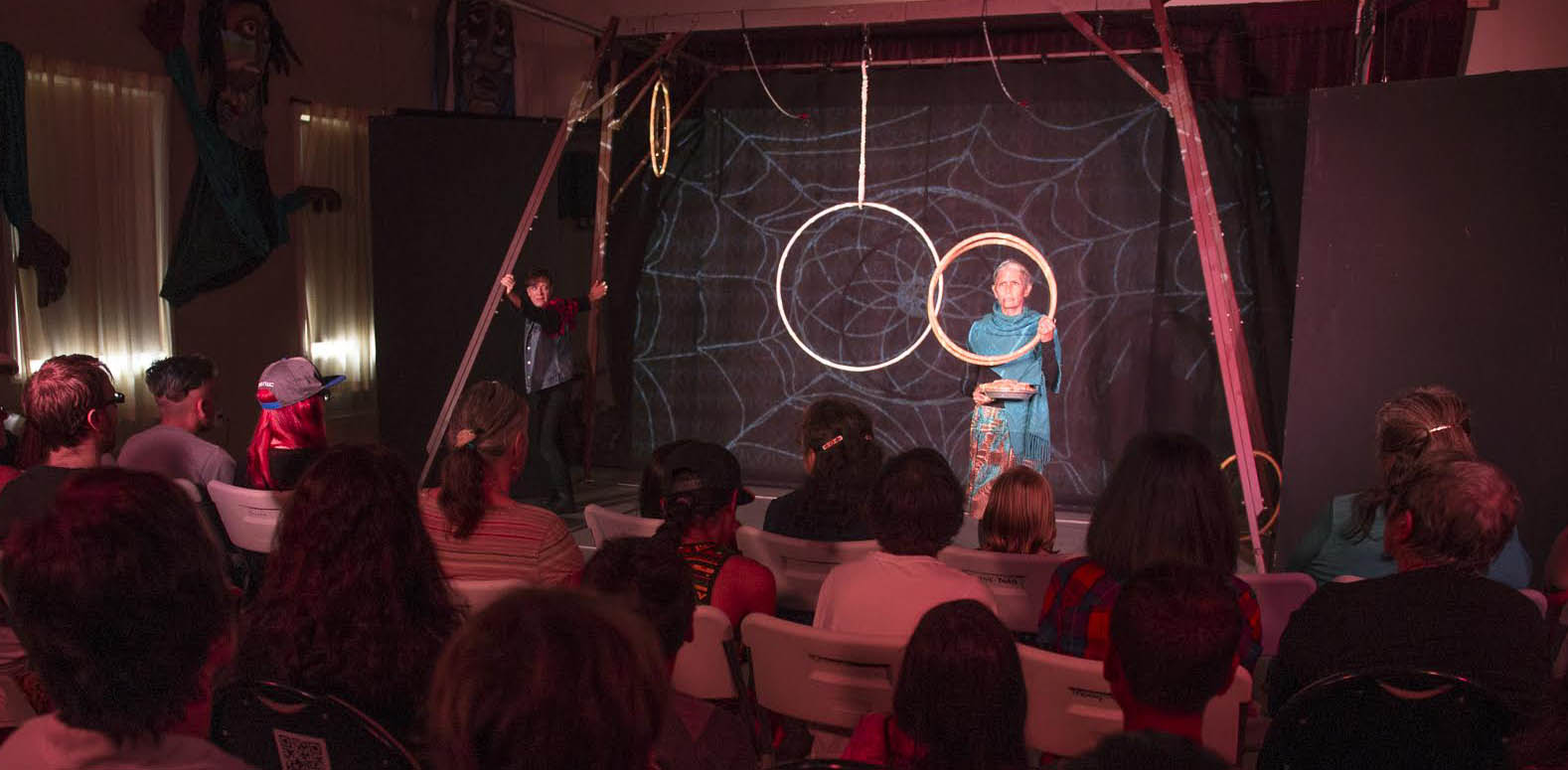‘A Side of Dreams’ catches the imagination

By Kelly Anne Smith
NIPISSING FIRST NATION – A Side of Dreams received great reviews from theatre goers on Nipissing First Nation. The Paper Canoe project featuring puppetry was hosted by the Big Medicine Studio on Nipissing First Nation during the fall tour.
The plays writer and main actor Jani Louzon brings teachings from her Canadian Indigenous experience to the stage. “The themes in the play are ones that I’ve dealt with all my life: mixed bloodedness, Métis culture, lack of culture, and lack of connection with family.”
A Side of Dreams is about a Métis woman named Haisa who has lost her voice. Her daughter Aina suffers the lack of mothering. Haisa then captures her voice back through a spiritual journey to the world of dreams where her ancestors open her eyes to the truth behind family and community violence.
In one scene, daughter Aina holds up a photo and says it is the only photo that exists of her mother who seems to have lost her identity. Louzon says the scene plays out her own life. “My dad went through residential school. We have no pictures of him from age 4 to 16.”
A Side of Dreams blends aerial hoop dance, puppetry, layers of sound and music, visual imagery, words and dialogue. Varied concepts like throat singing and drumming kept a constant flow of scenes to educate and entertain. The use of the violin has tale of the Metis experience. The spinning womb represents ancestors and then there is the cross and nature’s symbols.
The message of trauma from the flipping of Indigenous social order with the removal of the community’s children evoked emotions. Louzon’s words: “Voices were trapped. The tongue of our culture was cut off from language.”
The character Haisa gives hope in the end as she escapes her trauma to have a voice once more. “You have to reach inside your soul and dance away the darkness.” Louzon’s methodology blends the basics of clown concept with First Nation’s Mask Culture. “In a way, it’s very similar to oral culture. The answers are inside our bodies. Our bodies hold the memories. Our bodies are our devices holding the words and the text.”
Louzon calls out emotions to explore. “All of the material comes from that beautiful, sacred, core place.”
Louzon says her writing reflects her desire to be a solid parent for her daughter. “I’m keenly interested questioning what it means to pass teachings on to the next generation. How do we break the negative cycles?”
Louzon does inspire one to reconcile with the past to create a positive future.


